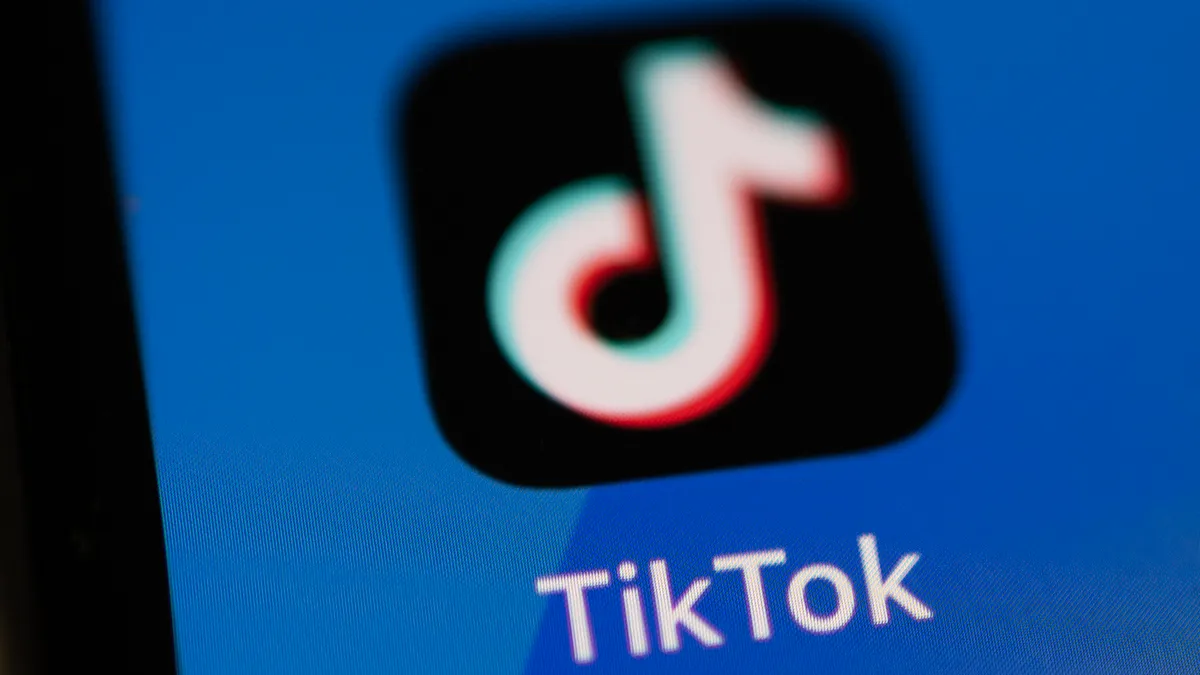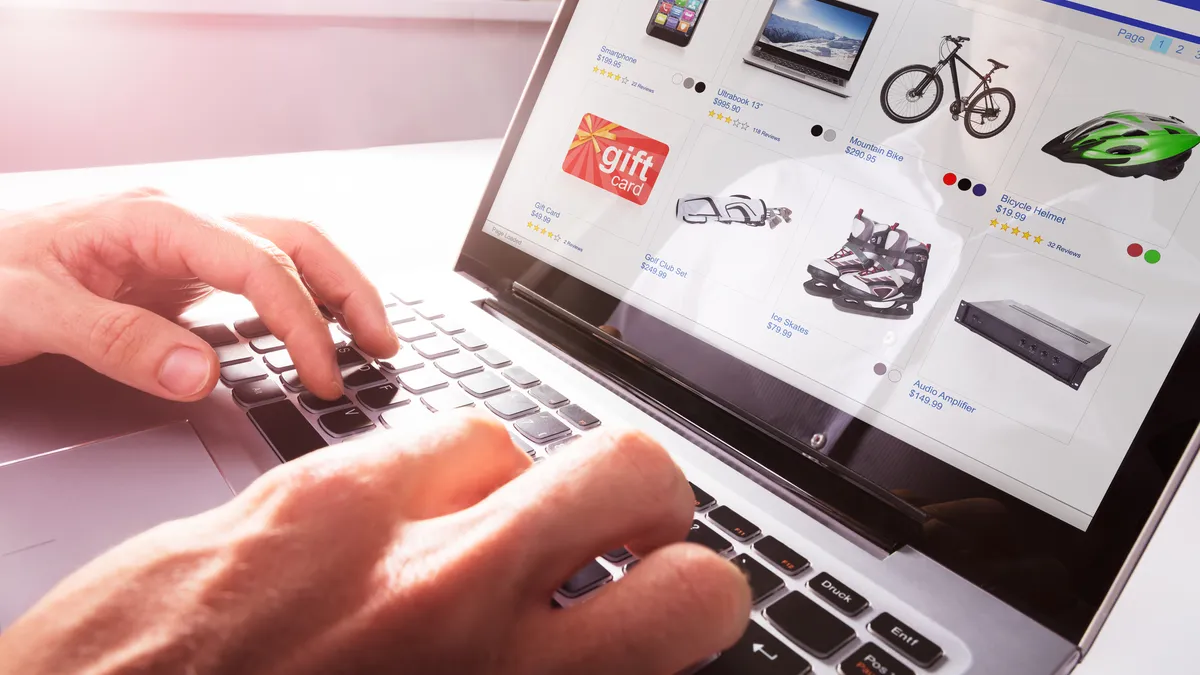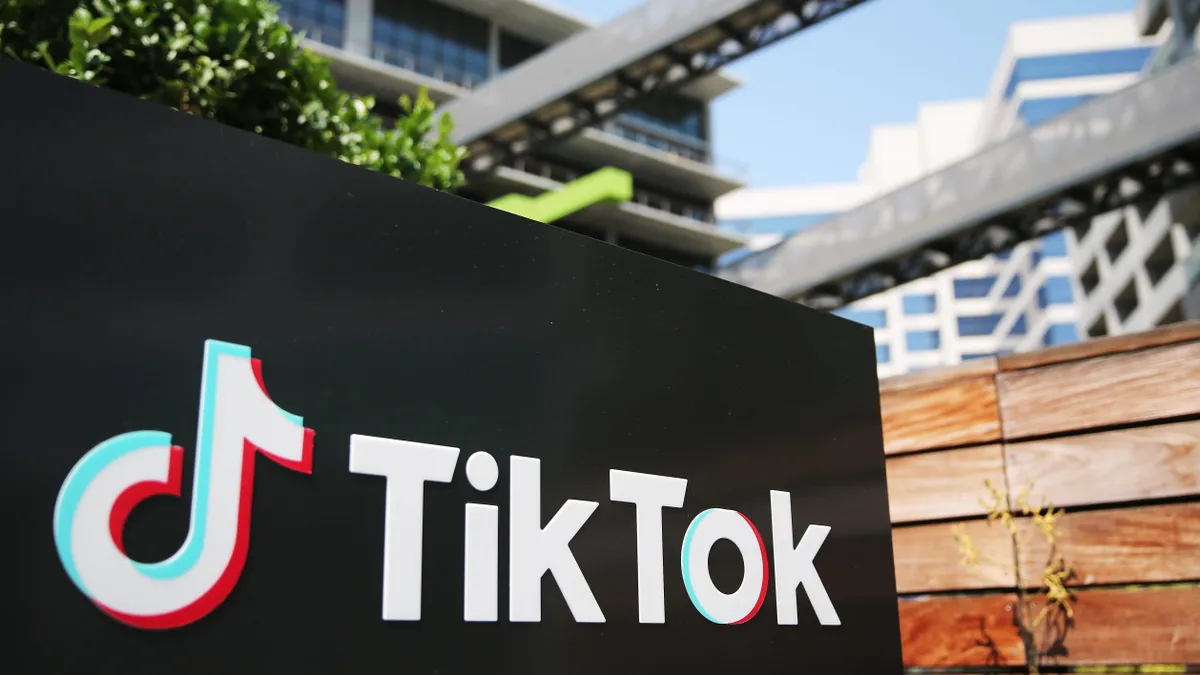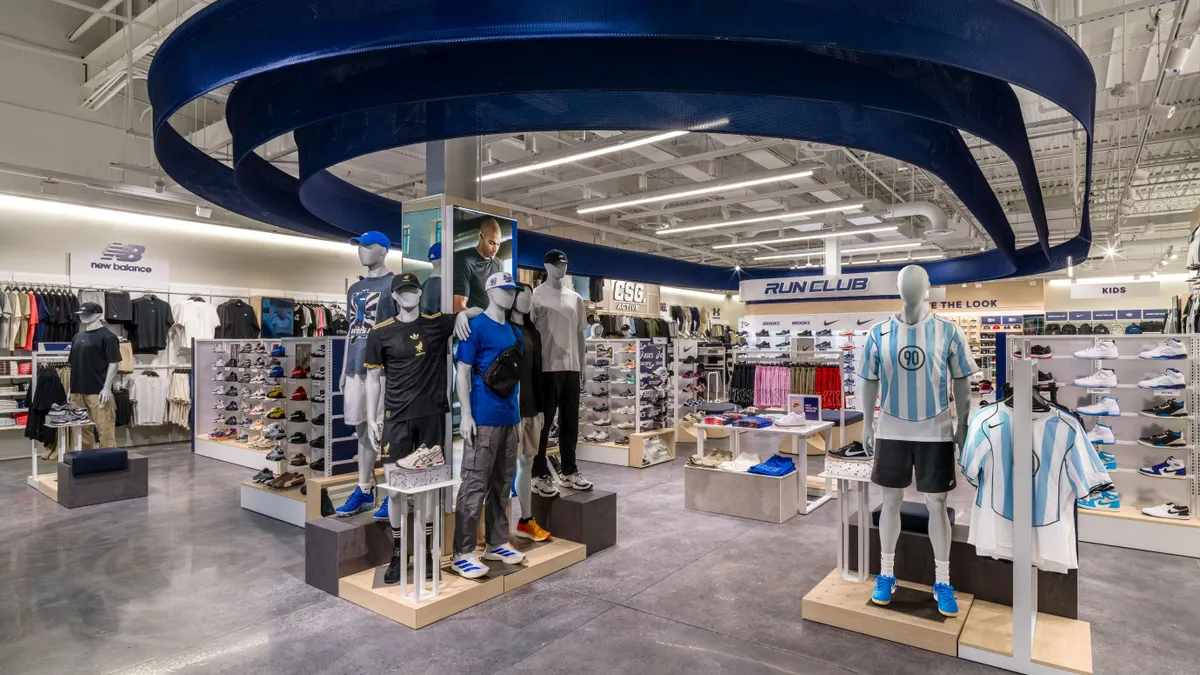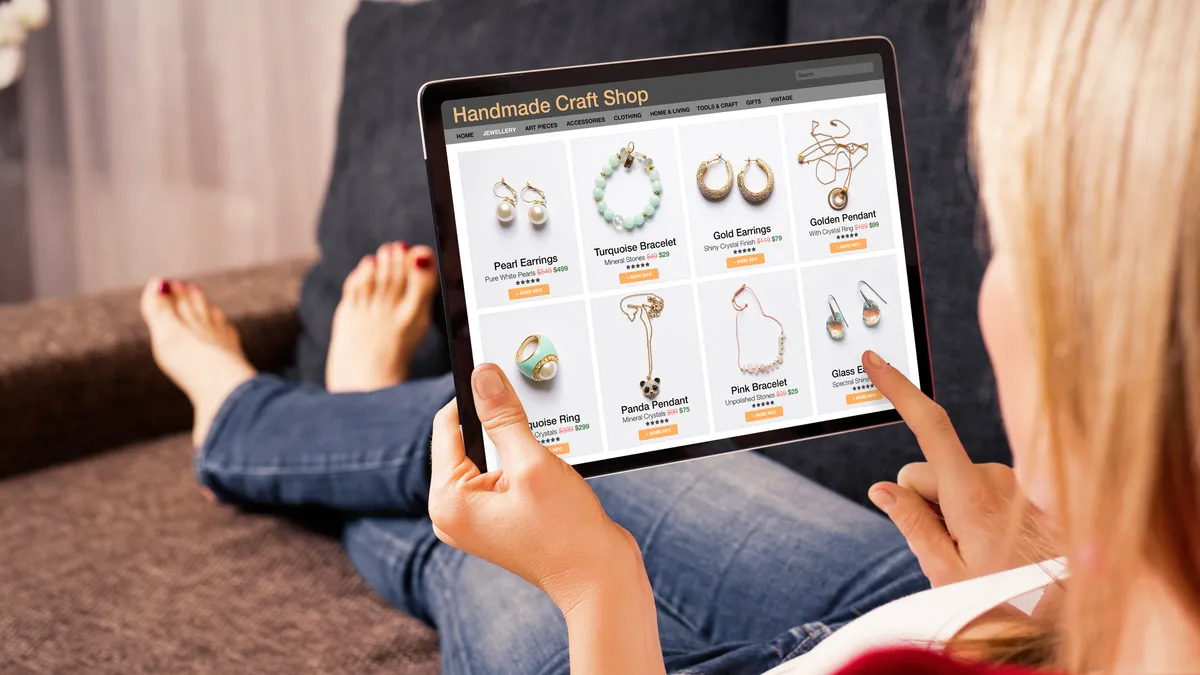Editor's Note: This story is part of a package on the past decade in retail. Find the rest of the stories here.
By necessity, venture capital firms think at least a few years ahead. That's made for a strange year, as the pandemic accelerated e-commerce and the growth rate of some DTC brands.
"I've never been through something like this as an investor," Andrea Hippeau, a principal at Lerer Hippeau, said. "I think there's a lot of people that are in my shoes and feeling like this is kind of our moment to invest in the companies that are going to be shaping the next decade or two decades, or however long it might be."
Hippeau noted that the pandemic caused some companies to initially delay fundraising and, paired with the election, introduced a lot of uncertainty to the market. Now some of those companies are pursuing venture capital again, meaning there's more competition among VCs as they sort through the pent-up demand.
"I think that has driven up the valuations because people are a little bit less price-sensitive, in terms of valuation, when there's a lot of hype," Hippeau said. "It's better to pay up for a deal than to lose out on a deal."
Venture capital firms and their investments were also better-positioned than others in retail during the pandemic because they didn't have the public eye on their financials, Alex Song, founder and CEO of the Innovation Department, said.
"When all of these things were happening, all of the volatility, they had the chance to just work closely with their businesses, to figure out how to navigate things," Song said.
It's unclear how the rest of the year will pan out, but as of September, just $1.9 billion was invested in retail by VC firms, based on deal value. By comparison, last year saw $3.4 billion and the year before, a 13-year peak of $3.7 billion, according to data from PitchBook.
The number of deals and average value have been on the rise since 2008
Still, 2020 is already higher than the Great Recession era of 2008, 2009 and 2010, more than double the total VC deal flow from each of those years. The number of deals in the retail space hit a peak in 2014 at 199, and has since been lower, but for the most part deal values, and average deal size, have been rising.
One reason for that is that valuations have increased, which means VC firms need to put more money into an investment to get the same return, Song said. Another reason is that late-stage rounds have increased as VC firms have found more capital to fund their investments. Companies also aren't necessarily looking to go public as quickly as they once were.
"Private investors are seeing the results realize quickly so you're able to maintain — if I'm going to be pessimistic — propped up valuations for longer," Song said. "If I'm going to be optimistic, I would say you now have more time for businesses to figure out a true exit strategy to maximize value for shareholders, instead of feeling like their path to a liquidity event is very much narrowed around a sale or an IPO."
Over the past ten years, retail has also become more centered around e-commerce and technology, which has given VC firms more of a reason to invest in the space. Eurie Kim, a general partner at Forerunner Ventures, said VCs have become more interested in the retail market as the potential for billion-dollar companies has grown and the speed at which they could become market leaders has increased, with much of VC investment in retail focused around "internet retail," per PitchBook's terminology.
"Something like a department store or a fast-food chain or a new brand doesn't have that exponential scalability because when you think about a store, the only way to grow is to open a new store. It's very linear," Kim said, noting that technology and social media have both helped to increase how quickly companies could scale. "It took 10, 20, 30 years to get to $200 million in revenue. Something like Away or Glossier, all of these direct-to-consumer brands, they can get to $200 million revenue in like three or four years. The inflection point of growth is just on a different scale when you think about what venture is looking for, versus what traditional retail has historically been fueled by."
The rise of the DTC brand
Amazon launched the conversation around e-commerce in 1994 with the promise of a better book-buying experience online. Bonobos restarted it in 2007 with the promise of better-fitting pants.
"The innovation was really in the model itself. This idea that you could go straight to a manufacturer and then straight to a consumer, and cut out the middleman and offer a superior product at a lower price, with a really great brand and consumer experience. I mean, that was really revolutionary at the time," Hippeau said.
For Kim, it was about investing in businesses that were talking to customers in a different way. And passing on some of the less-inspired categories. DTC toothpaste, for example, was of little interest to Kim, because consumers don't have the same relationship with their toothpaste brand that they might have with a beauty brand like Glossier (which Forerunner invested in).
"It was just modern," Kim said of the way DTC brands interacted with customers. "It was like, instead of having your mom or your dad tell you how to do something, this was your cool older sister. It's just much more resonant."
Forerunner also invested in Away, the buzzy DTC luggage brand — a move that many people scratched their heads at initially, Kim said.
"Here's an industry that's like a $30 or $40 billion industry globally — there's no winner, there's no brand that anybody cares about," Kim said, adding that the shopping experience was horrible and much of the market was no-name brands. "Luggage is essentially your home when you're traveling. That's who you are, everything in this box. And so we believed that there was an opportunity to take that product and build more romance around it."
Shopify was founded in 2006, a year before Bonobos, and Twitter, Instagram and Pinterest all arrived between 2006 and 2010. The iPhone, too, was launched in 2007. The result was that shoppers became increasingly technologically savvy, and therefore prepped to both interact with brands and purchase from them online, which all set the stage for the beginnings of DTC brands in the 2005-2010 timeframe.
In Forerunner Ventures' first years (the firm was founded in 2007), Kim said they called it the "digital commerce revolution," and it marked a moment in time where investors started to think more seriously about opportunities in the retail space.
"At that 10 years ago mark, they were thinking about e-commerce as, like, store number 57," Kim said of traditional retail players, noting however that brick and mortar did (and still does) make up a majority of sales. "Mentally, they were not in a place where they thought this was going to be a real thing."
Of course, it swiftly became a real thing — and the path of venture capital funding supports that. In 2008, internet retail accounted for $434 million of VC deals, compared to $93 million in specialty retail, the next-highest sector. While internet retail still had the highest level of investment — more than any other sector of retail at that point — the years following widened the divide significantly.
Internet retail is the dominant sector of VC investment
| Year | Deal flow | Count |
|---|---|---|
| 2008 | $0 | 0 |
| 2009 | $8,202,250 | 1 |
| 2010 | $1,500,000 | 1 |
| 2011 | $0 | 0 |
| 2012 | $2,500,000 | 1 |
| 2013 | $0 | 0 |
| 2014 | $0 | 0 |
| 2015 | $0 | 0 |
| 2016 | $0 | 0 |
| 2017 | $0 | 0 |
| 2018 | $1,000,000 | 1 |
| 2019 | $0 | 1 |
| 2020 | $0 | 0 |
| Year | Deal flow | Count |
|---|---|---|
| 2008 | $250,000 | 1 |
| 2009 | $120,000 | 1 |
| 2010 | $0 | 0 |
| 2011 | $375,000 | 1 |
| 2012 | $0 | 0 |
| 2013 | $0 | 0 |
| 2014 | $3,925,000 | 3 |
| 2015 | $2,500,000 | 1 |
| 2016 | $3,320,000 | 3 |
| 2017 | $3,504,000 | 2 |
| 2018 | $5,255,450 | 4 |
| 2019 | $25,100,000 | 5 |
| 2020 | $13,084,995 | 3 |
| Year | Deal flow | Count |
|---|---|---|
| 2008 | $19,100,000 | 4 |
| 2009 | $50,000 | 1 |
| 2010 | $8,401,500 | 4 |
| 2011 | $0 | 0 |
| 2012 | $0 | 0 |
| 2013 | $300,000 | 1 |
| 2014 | $900,000 | 3 |
| 2015 | $12,401,128 | 4 |
| 2016 | $3,245,000 | 4 |
| 2017 | $1,270,000 | 2 |
| 2018 | $140,000 | 1 |
| 2019 | $4,500,000 | 1 |
| 2020 | $0 | 0 |
| Year | Deal flow | Count |
|---|---|---|
| 2008 | $0 | 0 |
| 2009 | $0 | 0 |
| 2010 | $3,600,000 | 1 |
| 2011 | $2,100,000 | 4 |
| 2012 | $2,687,640 | 1 |
| 2013 | $2,600,000 | 1 |
| 2014 | $25,000 | 1 |
| 2015 | $1,000,000 | 1 |
| 2016 | $700,000 | 1 |
| 2017 | $100,000 | 1 |
| 2018 | $200,000 | 1 |
| 2019 | $1,911,400 | 2 |
| 2020 | $3,750,000 | 1 |
| Year | Deal flow | Count |
|---|---|---|
| 2008 | $434,276,296 | 49 |
| 2009 | $343,792,043 | 55 |
| 2010 | $418,503,258 | 84 |
| 2011 | $1,214,551,661 | 134 |
| 2012 | $930,387,670 | 154 |
| 2013 | $973,457,265 | 170 |
| 2014 | $1,631,481,261 | 159 |
| 2015 | $2,050,767,298 | 149 |
| 2016 | $1,765,883,799 | 115 |
| 2017 | $1,952,755,904 | 124 |
| 2018 | $3,234,787,544 | 121 |
| 2019 | $2,522,944,025 | 97 |
| 2020 | $1,589,263,878 | 63 |
| Year | Deal flow | Count |
|---|---|---|
| 2008 | $17,520,000 | 3 |
| 2009 | $13,431,340 | 4 |
| 2010 | $5,417,410 | 4 |
| 2011 | $19,770,000 | 8 |
| 2012 | $13,230,000 | 4 |
| 2013 | $250,000 | 2 |
| 2014 | $32,850,000 | 4 |
| 2015 | $54,301,800 | 6 |
| 2016 | $1,904,000 | 2 |
| 2017 | $450,000 | 2 |
| 2018 | $135,245,030 | 4 |
| 2019 | $155,000,000 | 2 |
| 2020 | $0 | 0 |
| Year | Deal flow | Count |
|---|---|---|
| 2008 | $93,470,400 | 6 |
| 2009 | $39,435,000 | 9 |
| 2010 | $30,582,714 | 9 |
| 2011 | $98,266,765 | 11 |
| 2012 | $65,797,400 | 18 |
| 2013 | $50,948,473 | 22 |
| 2014 | $84,454,065 | 29 |
| 2015 | $226,778,380 | 34 |
| 2016 | $318,736,490 | 33 |
| 2017 | $205,565,984 | 30 |
| 2018 | $311,682,742 | 30 |
| 2019 | $681,626,357 | 51 |
| 2020 | $267,851,730 | 30 |
By 2014, internet retail accounted for $1.6 billion of retail's VC funding, while specialty retail had decreased to $84 million. In other words, internet retail had almost 20 times the amount of VC dollars that any other sector did that year. Since then, investments in both internet retail and specialty retail have grown, with the former notching $2.5 billion in 2019, and the latter $682 million.
Internet retail should not be used as a correlate for how much money DTC brands have raked in over the years, though. PitchBook does not have a definition for what it considers internet retail, but Instacart, Wish and Jet all fall into that bucket, while DTC brand Away falls under specialty retail. Neighborhood Goods — the department store of DTC brands — is categorized as a department store rather than under internet retail.
In reality, sources said the amount of investment in DTC brands is meaningfully smaller than it's built up to be. A keyword search of direct-to-consumer retail on PitchBook's system finds five or fewer total deals each year between 2008 and 2020 and a peak of $65 million going into the space in 2018.
"It's disproportionate because of the familiarity of the names," Song said of the perception that DTC brands are one of the biggest areas of retail investment. Song estimates that close to 70% of investments in retail are in nonconsumer technology because they scale better than DTC brands do.
"Consumer businesses can only be so big. How many unicorns do we know about in the CPG space? Allbirds, fine — they just got there. Warby Parker. People thought Casper was, but that wasn't true," Song said, noting Casper's drop in value after going public. "We're struggling to name five. But I can tell you, like, 10 in the last three months, that have gone public that are not consumer."
Kim puts the number at "less than 25" for DTC brands that have gotten to "real scale."
From 2008 on, the 10 top VC deals (by size) in retail are split between five companies, none of them direct-to-consumer brands: Instacart, GoPuff, Wish, Letgo and Jet.
Biggest retail VC deals since 2008, by deal size
| Company | Deal size (millions) | Close date |
|---|---|---|
| Instacart | $871 | Dec. 13, 2018 |
| GoPuff | $750 | Aug. 1, 2019 |
| Wish | $514 | May 8, 2015 |
| Letgo | $500 | Aug. 8, 2018 |
| Wish | $500 | May 16, 2016 |
| Instacart | $413 | March 15, 2017 |
| Instacart | $350 | April 5, 2018 |
| Jet | $350 | Nov. 24, 2015 |
| Wish | $300 | Aug. 1, 2019 |
| Wish | $250 | Sept. 15, 2017 |
Source: PitchBook
All of them, however, are tied to e-commerce. And they represent a larger trend over the past ten years, of preparing for a digitally-driven world, according to Kim.
"Why has money all gone to that sort of halo of opportunities? It's been that you have to walk before you run," she said. "The past 10 years has been really a lot of infrastructure building, getting everything online, having the systems to be able to match the inventory, slowly being able to do each of the things that's necessary. And now you're at a point where almost everybody is kind of up the curve."
'Venture capital validating venture capital'
At the height of interest around DTC brands, Carle Stenmark, a partner at VMG Partners, noted that what was appealing to VCs was that growth came easier to the model than wholesale, especially with the aid of social media marketing. Now, however, many have become reliant on paid marketing and end up plateauing.
"It was almost venture capital validating their own investments, venture capital validating venture capital," Stenmark said. "And that just increased the excitement around direct to consumer because on paper, all these were valued very highly and so folks thought they were missing out. That's where, over the last five years, six years, where VC traditionally steered clear of consumer, [they] all of a sudden became very excited. Because you had these fast-growing brands that were raising at high valuations."
After 2010 to 2015, which is where Hippeau places the largest growth of DTC brands, came the beginnings of a fall. It became more difficult to capture consumer attention and more expensive to acquire customers, and DTC brands shifted back to the brick-and-mortar model, opening up their own stores and bringing back the middleman through partnerships with the likes of Target and Nordstrom.
"There was this almost 360 where that whole model was disrupted, and then just within the span of five to eight years, we came right back to it," Hippeau said.
The saturation of the retail market with e-commerce businesses brought along new problems, like consumer fatigue with the sheer number of choices it offered. That in turn led to a movement toward curation, and the Stitch Fix's of the world.
The DTC movement also brought with it the question of what defined retail and what defined a tech company. Kim pointed to Bonobos founder Andy Dunn as one of the first people to have to define whether digitally native brands were tech companies or retail companies, and Stenmark thinks the view of DTCs as tech companies is likely behind some of the high valuations as well.
"There's some definitely real, legitimate arguments for them to be valued in a different way than a traditional consumer company if they're actually providing unique personalization through the data that they are capturing, and thus delivering a better consumer experience," Stenmark said. "But if they're using direct to consumer just as a distribution channel, which I think a lot were, then all of a sudden they're just way overvalued because they're not going to trade ultimately any different than any other consumer brand."
That's not to say that direct-to-consumer businesses can't scale successfully, or that the model hasn't significantly changed the way retail works. According to Stenmark, the direct-to-consumer model has become "increasingly important" in recent years as an alternative to scaling a brand on Amazon, and companies need both an Amazon strategy and a DTC strategy now.
The future of VC funding
As DTC brands' shine was dimming, the pandemic arrived and lifted business for many digitally native brands and boosted general e-commerce sales when consumers turned to their computers instead of the mall. That's led to a "rebirth" of sorts for direct to consumer, both for digitally native brands and as a channel for other retailers, Hippeau said.
She noted that e-commerce itself has experienced four to six years of growth in a matter of months since the pandemic hit, and expects shopping to be "fundamentally changed" as a result, despite the fact that consumers will, at some point, return to physical stores. Hippeau, like Kim, referenced the infrastructure that companies like Shopify and others have brought to the retail space as a meaningful enabler of e-commerce businesses.
And for DTC brands specifically, the audience has now grown as well.
"The pie has really expanded for DTC with COVID," Hippeau said. "There was the boomer generation that was maybe a little bit more reluctant to shop online: They've now all come online, and those are consumers that are likely to stick as DTC consumers."
Meanwhile, the rest of retail has been struggling to survive, with retail potentially on course for a record year of bankruptcies. Hippeau doesn't see many retailers getting their lost market share back.
Others aren't so sure about the future of DTC brands specifically.
"All of these trends in VC, in tech investing, it's all about investor confidence, right?" Song said. "It's about momentum. It's about feelings and emotions and subjective perspectives."
He added that there's a large supply of available capital right now, and if that money moves to "safer" areas, it will have a domino effect on DTC brands. "All those businesses that are yet to be publicly trading and are still dependent on additional capital, all of that valuation will compress and it will compress quite quickly."
Where will the money go instead? To retail tech businesses that can scale faster, according to Song.
Stenmark notes that VC has been "cooler" on DTC brands recently as the results from IPOs like Casper and Blue Apron have shaken confidence in the model. The real problem, to him, is adjusting expectations in the future so that VCs aren't aiming for high-speed, high-growth, billion-dollar exits.
"I'm still very bullish on the space. It's just: How much capital do you raise? What's your real [total addressable market]?" Stenmark said. "We always say, 'It's not a race to get there.' I think we've seen too many companies burn through way too much capital and as a result, put a ton of execution risk on themselves, versus taking a more methodical approach to the direct-to-consumer space."
Whatever role DTC plays in the next few years of venture capital funding in retail, the investment space itself will be hot for the foreseeable future, according to Hippeau and Kim, as investors seek out the next wave of technological innovation. Kim notes that retail will have to be "completely reimagined" after the pandemic, including how retailers operate physical stores.
And there's a slew of businesses that will crop up in the wake of that transition.
"Think about all the companies that are being started today or yesterday or a month ago," Hippeau said, adding that they'll likely come to market in one to three years. "Those are the real companies that will have been built with this COVID point of view, and also seeing, what are the real changes that are going to be made to the market? What are the areas that are really going to be affected long term versus more short-term? That's going to play out over the next five years, I would say, and I think that venture's going to be a big part of that."








